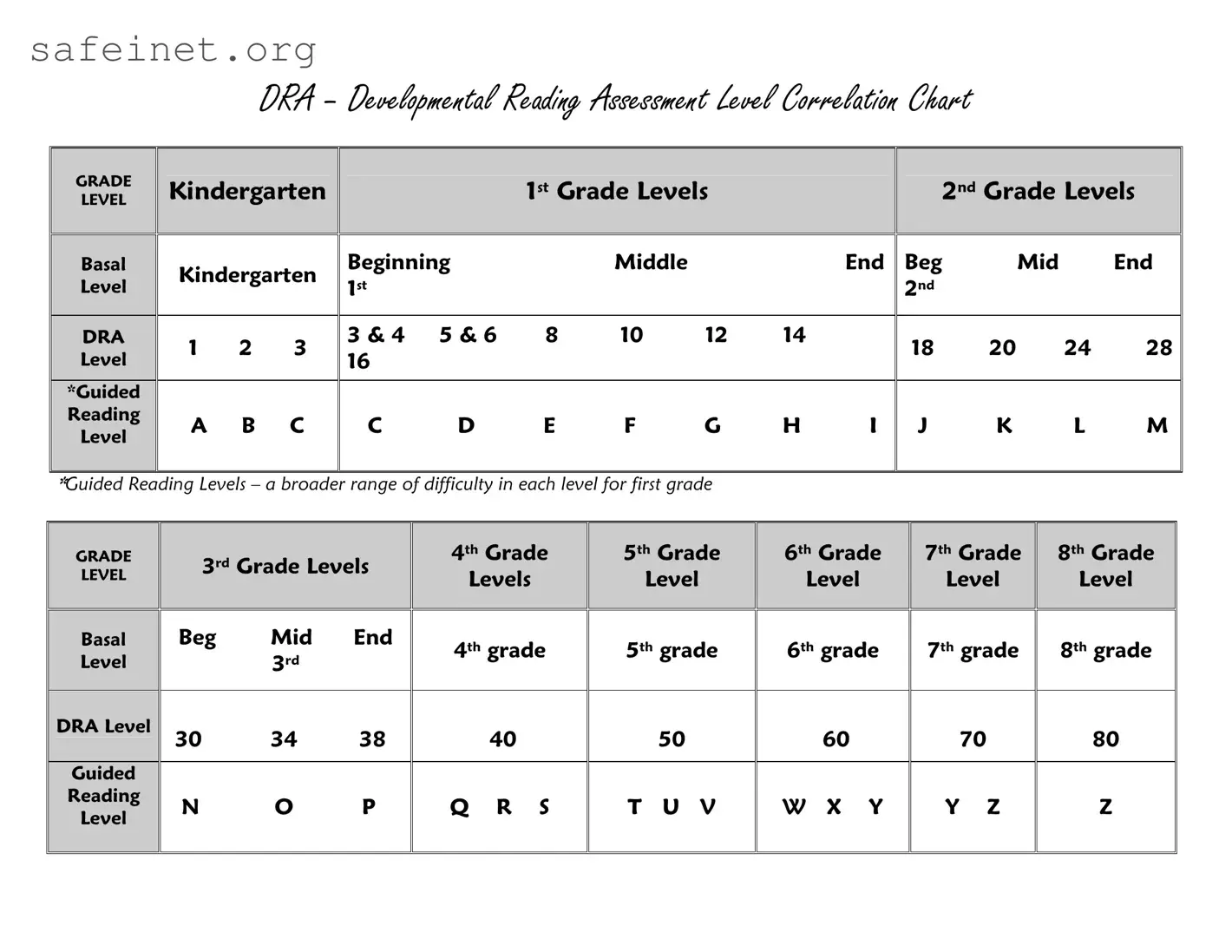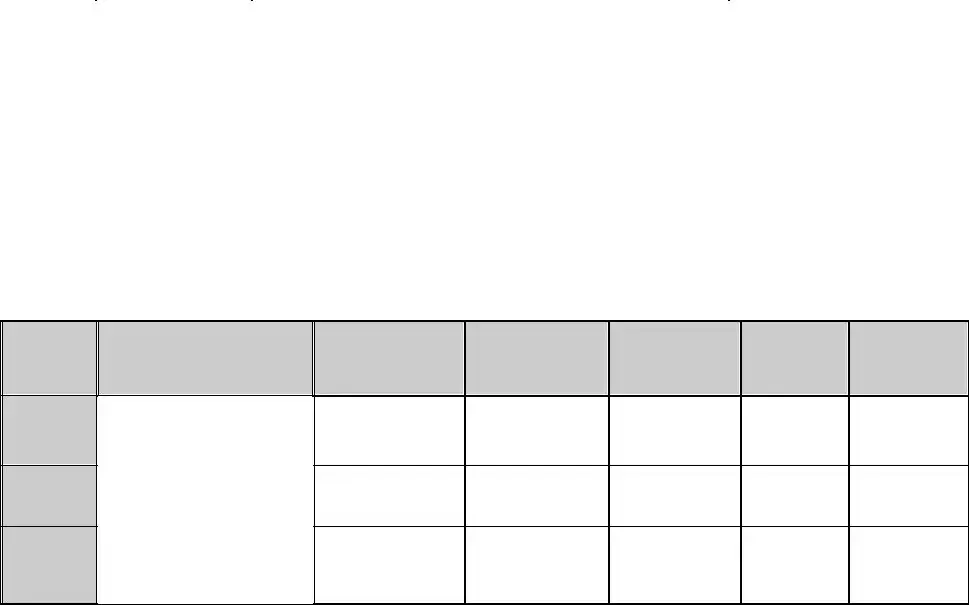What is the DRA Reading Levels Chart?
The DRA Reading Levels Chart is a tool used to assess students' reading abilities across different grade levels. It aligns Developmental Reading Assessment (DRA) levels with guided reading levels, helping educators identify the appropriate reading materials for students and track their progress throughout the school year.
How do I read the DRA Reading Levels Chart?
The chart displays grade levels on the left, ranging from Kindergarten to 8th grade. Next to each grade, you will find corresponding DRA levels and guided reading levels. For instance, a 1st grade student at the beginning level might be at DRA level 2 and guided reading level B. As students advance, you can see how their DRA levels correspond to the guided reading levels and other grade levels.
What are Basal Levels?
Basal levels refer to the starting point for reading instruction within each grade. They help educators identify where to begin when teaching reading skills. For example, Kindergarten has a Basal Level of ‘Kindergarten’, indicating that reading instruction should start from this foundational level.
What does it mean if a student is at the Mid or End of a Level?
Being at the Mid or End of a level indicates that the student has mastered the skills associated with that DRA level. For instance, a student at the End of Level 3 is reading at a higher proficiency than a student at the Beginning of Level 3. This information can help teachers tailor instruction and support based on individual reading development.
How often should I assess my students using the DRA?
It is recommended to assess students periodically throughout the school year. Regular assessments help track their reading progress and can provide valuable insights into their growth. You might assess at the beginning of the school year, midway, and at the end to determine how much progress each student has made.
Can the DRA levels help me choose reading materials for my students?
Yes, the DRA levels are designed to guide educators in selecting appropriate reading materials. By using the DRA levels and corresponding guided reading levels, teachers can find books that match their students’ reading abilities, promoting skill development and encouraging a love of reading.
Is the Guided Reading Level the same as the DRA Level?
No, while they are correlated, the Guided Reading Level and DRA Level are not the same. The DRA assesses specific reading skills and fluency, while Guided Reading provides a broader range of difficulty within each level. It is helpful to consider both when evaluating a student's reading proficiency.

